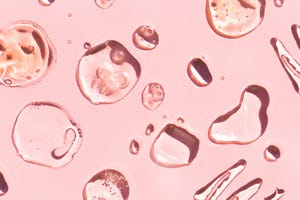
What is 'Clean Beauty' and How to Participate on a Budget - CNET
The term “clean beauty” has been making the rounds on social media in recent years. The buzzword refers to making informed decisions about the ingredients in your personal care products, since cosmetics and other similar products are not heavily regulated by the US Food and Drug Administration.
In response, new beauty brands have emerged, touting that they produce “clean” products — as opposed to those packed with harmful chemicals. Of course, a major drawback to many clean beauty products is the hefty price tag. Here is how to switch to safer beauty and personal care products without spending an excessive amount of money.
What is clean beauty?
The definition of clean beauty seems to be very loose. To find out what exactly it is, I spoke with two experts.
“Clean beauty refers to the idea that anything applied to your skin should be formulated with only ingredients that are beneficial to your health overall,” said Dr. Nava Greenfield, board-certified dermatologist at the Schweiger Dermatology Group. “Clean beauty strives to incorporate as many naturally sourced ingredients as possible, but it’s not limited to only natural ingredients.” Greenfield adds that clean beauty could also mean avoiding products that could cause allergic reactions or any irritation.
Celebrity makeup artist and brand founder Jenny Patinkin told me, “There’s no one definition of clean beauty. To some people it means products that are formulated without known and suspected toxins, to others it means ingredients taken from nature rather than a lab. Or it means products that are sustainably sourced and produced with the health of the planet in mind.” Patinkinadded that sometimes it’s hard to tell which products really are clean, since there are no regulations around using the words “clean,” “natural” or “sustainable.”
“Sometimes,” Patinkin said, “you can research a brand and get a sense of their mission and belief system, [but] it’s impossible to be 100% clean. You just have to educate yourself and decide what’s important to you.”
Clean beauty swaps and tips

Here are a few starting points to get you into the clean beauty game.
Avoid products that contain phthalates, oxybenzone or strong fragrances
If you want to be informed about all of the potentially hazardous ingredients that go into your personal care products, you first need to look at your labels. Greenfield says that this can be tailored to the individual, but you should definitely steer clear of phthalates, oxybenzone and strong fragrances.
Phthalates are often found in fragranced lotions, color cosmetics, body washes, and hair and nail care products. Banned in the EU, phthalates can cause cancer. Oxybenzone is often found in foundations, shampoos, lip balm, moisturizers and sun care products and may be an endocrine disruptor. Meanwhile, strong fragrances are found in almost all beauty and personal care products. Companies don’t have to disclose what chemicals were used to make these fragrances.
“I also tend to avoid products with a lot of fragrance because as unregulated as skin care ingredients are, fragrance is even less so,” Patinkin said.
Some other chemicals you don’t want in your beauty products include 1,4-dioxane, benzophenone, ethanolamine compounds, formaldehyde, lead, methylisothiazolinone, methylchloroisothiazolinone, PABA, parabens, preservatives and titanium dioxide.
Use online tools to determine if your products are clean
If you want to start a clean beauty routine, you don’t necessarily need to start from scratch. Before you throw products out, check to see if any of the ingredients could be potentially harmful. A good way to start learning about ingredients is the free Yuka app. This tool scans barcodes, pulls up the product and highlights all of the potentially toxic ingredients. It then gives it a score out of 100. However, this app may not always be accurate.
Other helpful, free tools are the Campaign for Safe Cosmetics and Credo websites. Both give an extensive list of harmful ingredients found in cosmetics and personal care products. Credo doubles as a tool for information and a retailer of all clean beauty brands. Wonder if you own any of the top clean beauty products? Check here.
“It’s best to find brands that you trust,” Greenfield said, “and stick with their products to be sure you know they have already vetted all the ingredients that go into your products.”
Check out these budget clean beauty brands
While not all clean beauty brands are affordable, there are a few that are worth looking into.
“I love REN, which is one of the first in the field and is also a recommended brand for sensitive skin,” said Greenfield. “More economically, C’est Moi can be found at drug stores and is [a] clean beauty [brand] for tweens and teens.”
“Naturium is an excellent skin care line at Target,” said Patinkin. This budget brand carries cleansers, body lotions and body wash. She also recommends looking at brands sold on Credo, The Detox Market, Naked Poppy or Beauty Heros.

